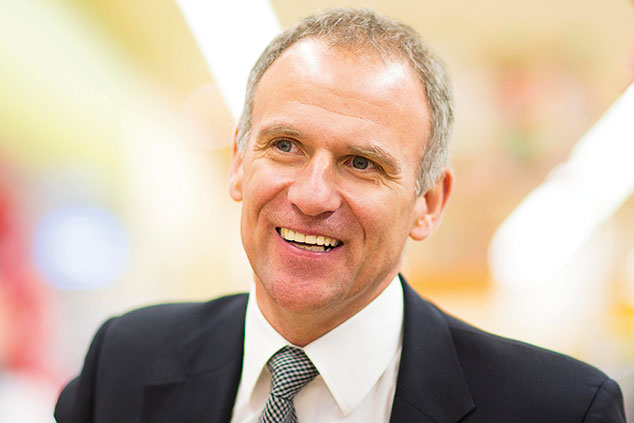
Retailers have it tough, but one supermarket at least has shown that it’s still possible to thrive, says Matthew Lynn.
Three years ago just about everything that could go wrong had gone wrong for Tesco. From a high of more than 400p back in 2013, only a year ago the shares had dropped as low as 160p. And now? They have climbed all the way back to 260p, for a one-year gain of more than 60%. That came on the back of figures in June showing a 2.1% rise in sales, the tenth consecutive quarter when its overall revenues were up. That is a remarkable turnaround from Tesco’s reported loss of £6.4bn in 2014. At a time when every mainstream retailer seems to be under intense pressure, and with shops closing every week, what are the lessons to be learned from Tesco’s comeback?
1. Bring in an outsider
For a company with a long record of promoting its own people from within, it was a bold move to bring in someone
from outside retail. But Dave Lewis, who joined them from Unilever, has proved an inspired choice. He knows about marketing, food and branded goods, but he had none of the preconceptions that come with a career in the grocery trade. He has brought fresh thinking to Tesco’s business, and re-energised a management team that had started to seem confused and jaded. A lot more retailers should bring in people from other industries – they could use a fresh vision right now.
2. Slim down
Tesco had expanded too quickly, and into too many areas. It spent millions building a business in the US, a traditional graveyard for British retailers. It tried to compete with Amazon in online retailing, a hopeless mission, and dabbled in family restaurants, garden centres and coffee shops. Most of these were expensive follies and have since been sold off. The business that remains will have fewer global ambitions, but the management has a lot more time to focus on the core business.
3. Focus on value and service
Tesco’s business was built on a pile-it-high-and-sell-it-cheap philosophy, but as it grew larger and larger it started to lose sight of that. The likes of Aldi and Lidl were cheaper, and Waitrose and M&S both offered better quality. Tesco was increasingly stranded in the middle, neither especially good nor particularly cheap. It was never going to be able to match the discounters completely on price, at least not without destroying its profitability. But it has relentlessly controlled prices, while at the same time improving its quality and the service in its stores. The result? It has a clear offering again, and one that still seems popular with shoppers.
4. Bulk up where necessary
A couple of years ago, it would have been impossible for Tesco to make an acquisition. The City would never have supported it. But this year Tesco completed the £4bn takeover of Booker, the UK’s largest food wholesaler. Shareholders were sceptical about the deal to start with, but if it can deliver greater purchasing power and operational efficiencies, then Tesco can increase its lock on the UK market and make it more profitable as well. Lots of retailers have been scared away from deals, or have made purely defensive moves – such as the proposed Sainsbury’s-Asda merger. But Tesco has not just been slimming down and defending what it has – it has also been making some aggressive moves forwards to complete its turnaround.
True, there are still plenty of challenges ahead. In the UK retailing remains a brutal business, with stagnant real incomes, ferocious competition from online retailers, and punishing increases in staff costs and taxes, in particular astronomical business rates. It might all come unstuck for Lewis and Tesco at any time, and that would plunge the company back into crisis. Even so, its recovery shows that retailing is not a completely hopeless industry. Anyone who backed a Tesco turnaround by buying the shares a year ago will have done well.